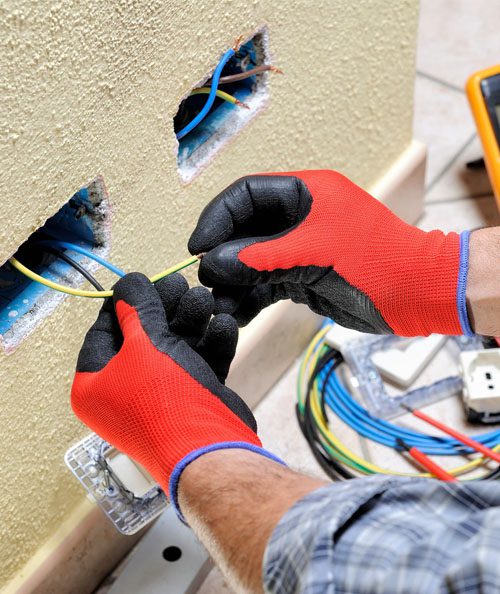There’s no room for compromise when it comes to the safety of your tenants. As a landlord, it’s crucial to ensure that your rental properties are equipped with the best fire safety measures to protect your occupants. From smoke alarms to fire extinguishers, following a comprehensive fire safety checklist is necessary in safeguarding your property and the lives of those who call it home. Stay informed and proactive with these critical fire safety tips for landlords, because prevention is always better than dealing with the aftermath of a fire.
Understanding Your Responsibilities
Legal Obligations for Landlords
Before delving into fire safety measures, it’s crucial for landlords to understand their legal responsibilities. As a landlord, you are required by law to ensure that your rental properties meet all fire safety regulations. This includes providing working smoke detectors, fire alarms, and fire extinguishers in the property.
The Importance of Regular Safety Audits
Your obligations don’t end once you’ve met the initial fire safety requirements. Regular safety audits are imperative to ensure that your property continues to meet the necessary safety standards. These audits help identify any potential fire hazards or safety risks that may have emerged since the last inspection. Regular audits can help prevent potential disasters and protect your tenants from harm.
With the ever-changing nature of tenancy laws and fire safety regulations, staying proactive and conducting regular safety audits is key to fulfilling your obligations as a responsible landlord.
Preparing Your Property
Installing Fire Detection Devices
One of the most crucial steps in ensuring your tenants’ safety is to install fire detection devices throughout the property. Smoke alarms and carbon monoxide detectors should be placed strategically in key areas such as bedrooms, kitchens, and hallways. Regularly check and maintain these devices to ensure they are functioning properly.
Ensuring Adequate Escape Routes
Escape routes are crucial in the event of a fire emergency. Make sure your property has adequate escape routes that are easily accessible and clearly marked. Windows should open easily, doors should unlock without keys, and there should be no obstructions blocking any exits.
Your tenants’ safety should always be a top priority. Conduct regular fire drills and educate your tenants on the escape routes and emergency procedures. Consider installing fire extinguishers in common areas and providing fire safety guidelines in your rental agreements. By taking these proactive steps, you can significantly reduce the risk of fire-related incidents and ensure the safety of your tenants.
Maintaining Fire Safety Standards
Regular Inspection and Maintenance
For landlords, regular inspection and maintenance of fire safety equipment is crucial to ensure the safety of your tenants. This includes checking smoke alarms, fire extinguishers, and emergency lights on a periodic basis as per local regulations. It is also important to conduct professional inspections of the building’s electrical wiring and heating systems to prevent any fire hazards.
Tenant Fire Safety Education
Tenant fire safety education is imperative to ensure that your tenants are well-informed on how to prevent fires and respond in case of an emergency. Provide them with clear instructions on fire evacuation plans, the location of fire exits, and how to use fire safety equipment. Regularly remind tenants of fire safety protocols and conduct fire drills to practice emergency procedures.
Maintaining a high level of fire safety standards not only protects your tenants but also your property. Ensuring that all fire safety equipment is regularly inspected and properly maintained can significantly reduce the risk of a fire-related incident. By educating tenants on fire safety measures and conducting regular drills, you can proactively prevent potential disasters and create a safer living environment for everyone.
Dealing with Emergencies
Establishing Clear Procedures
To effectively deal with emergencies, it is crucial for landlords to establish clear procedures for both themselves and their tenants. These procedures should outline the steps to be taken in case of a fire or other emergency, including evacuation routes, designated meeting points, and how to contact emergency services.
Communication and Coordination Efforts
To ensure a quick and coordinated response in emergencies, communication is key. Landlords should have clear lines of communication with tenants, emergency services, and neighboring properties. Utilizing tools such as email lists, text alerts, or a phone tree can help disseminate important information efficiently.
Procedures should include assigning specific roles and responsibilities to both landlords and tenants during an emergency. Regular drills and training sessions can help ensure that everyone knows what to do and can act swiftly in a crisis situation.
Summing up
With these considerations in mind, it is crucial for landlords to prioritize fire safety measures to ensure the well-being of their tenants. By implementing the items on this checklist, such as installing smoke alarms, maintaining fire extinguishers, and creating a fire escape plan, landlords can significantly reduce the risk of fire-related incidents on their rental properties. Staying vigilant and proactive in fire safety measures can ultimately save lives and protect both tenants and properties.


